Best toddler shoes: The ultimate guide
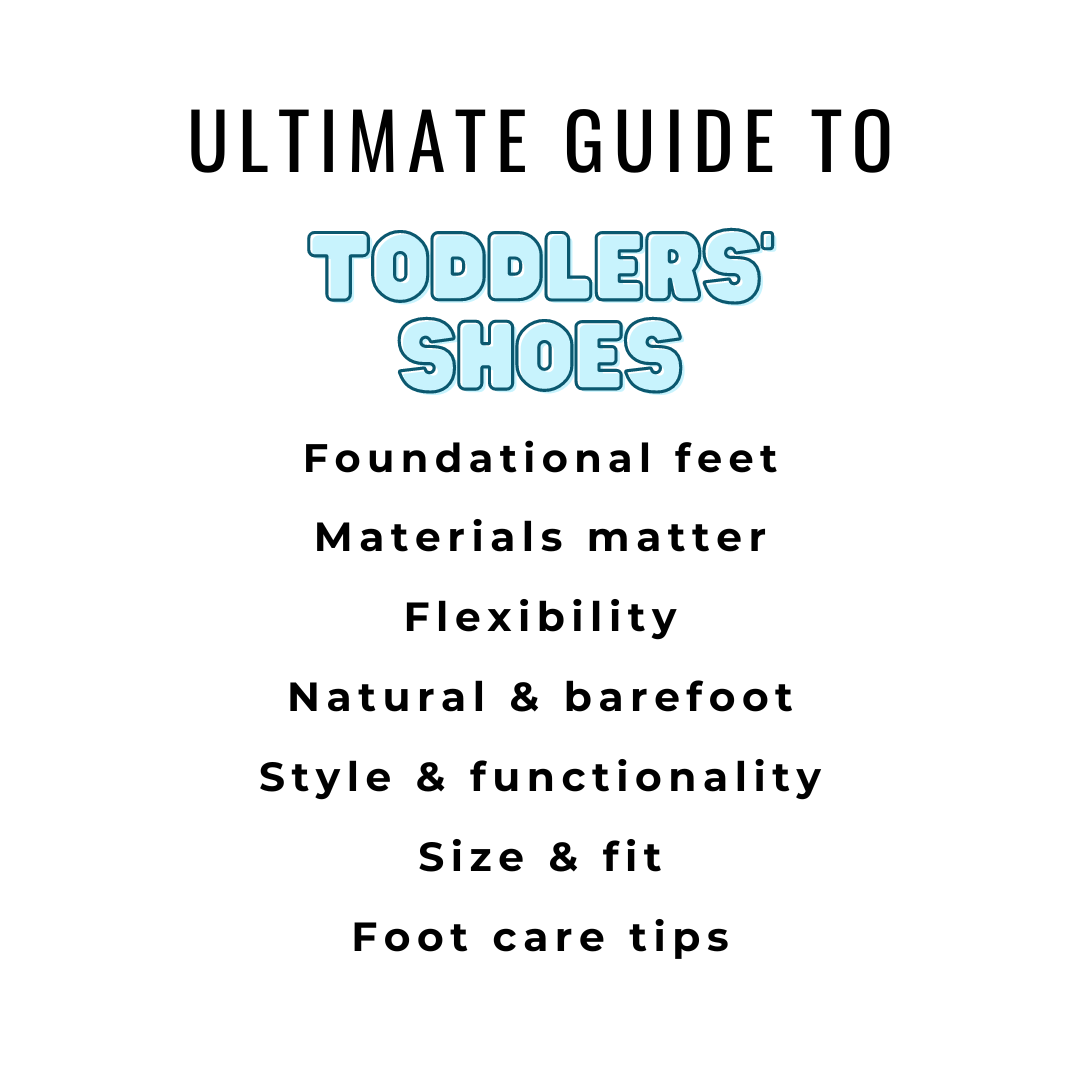
Foundational feet
Footwear for toddlers is more than just a protective covering. During these foundational years of life the shoes you choose to put on a child's feet will influence the natural growth and physical development, not just of the feet, but of the wider body.
Ideally, up to at least the age of 4, children should be barefoot whenever possible to promote healthy development of the feet, gait and posture. The American Academy of Pediatrics (AAP) emphasises the importance of allowing toddlers to walk barefoot (or in non-restrictive shoes) to promote natural foot strength and coordination.
During these crucial toddler years, and ideally into school and even teen years, parents and children should practice being barefoot at home whenever possible; with shoes only being worn outside of the home and when it is not safe or practical to be barefoot.
When shoes are required, properly designed shoes are critical, especially during early childhood years. In this article, we delve into the 5 most important factors that parents should be aware of to help choose the best shoes for toddlers.
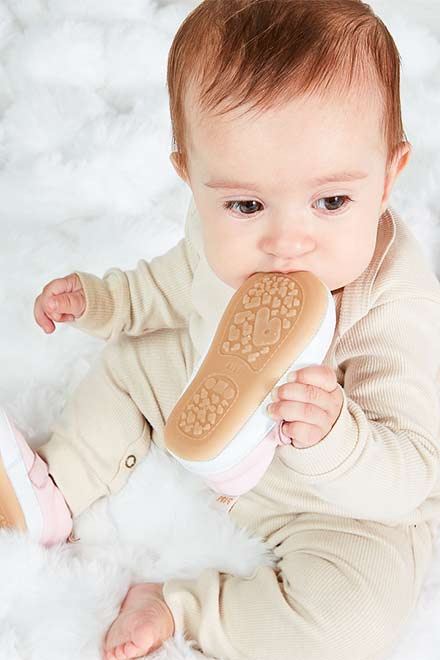
Materials matter
In the world of children's footwear, the selection of materials significantly influences not only foot health and comfort but also environmental impact.
Leather is highly favored for its superior breathability, flexibility, and durability. Its natural properties allow for a comfortable fit that adapts to the foot's shape, promoting healthy foot development. Leather's porous nature helps in regulating temperature and reducing moisture, thereby preventing fungal infections. However, environmental concerns arise from the leather tanning process, which can involve harmful chemicals and significant water use.
Among synthetic materials, Ethylene-Vinyl Acetate (EVA) stands out for children's shoes, particularly in soles. EVA is lauded for its lightweight, shock-absorbing qualities, offering cushioning that supports active play while reducing impact on growing joints. It also boasts low toxicity levels, making it a safer choice for children's products. Compared to other synthetics, EVA presents a lower environmental impact during production, being more energy-efficient and requiring fewer resources.
However, synthetic materials, including EVA, can contribute to microplastic pollution, and their production involves fossil fuels, raising environmental concerns. Some synthetics offer water resistance and durability but may lack the breathability and comfort of natural materials like leather.
The footwear industry is exploring sustainable alternatives, such as recycled materials and eco-friendly tanning methods for leather, to mitigate environmental impacts. Parents concerned about both foot health and environmental sustainability are encouraged to look for shoes made from certified sustainable leather or high-quality, eco-friendly synthetics.
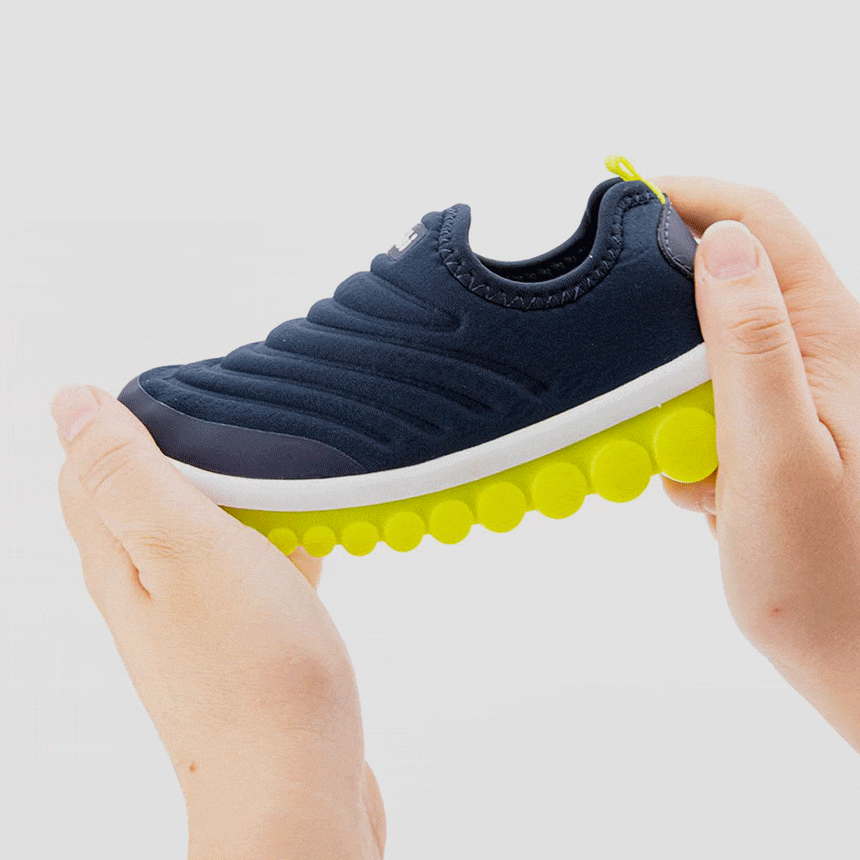
Flexibility
Flexible shoes are crucial for young children's foot health and development. As children's feet are still growing and forming, rigid footwear can impede natural growth and movement. Flexible shoes more closely mimic the sensation of walking barefoot, which is essential for the proper development of foot muscles and bones. They allow for the natural flexing of feet, toes, and ankles, fostering better balance, coordination, and a healthy gait.
Flexibility is achieved through the use of soft, pliable materials and design techniques that mimic the foot's natural flexibility. Soles, often made from rubber or Ethylene-Vinyl Acetate (EVA), are specifically engineered to be lightweight and bend easily with the foot's movements. Prioritising flexibility will promote a more natural walking pattern and contribute to overall foot health.
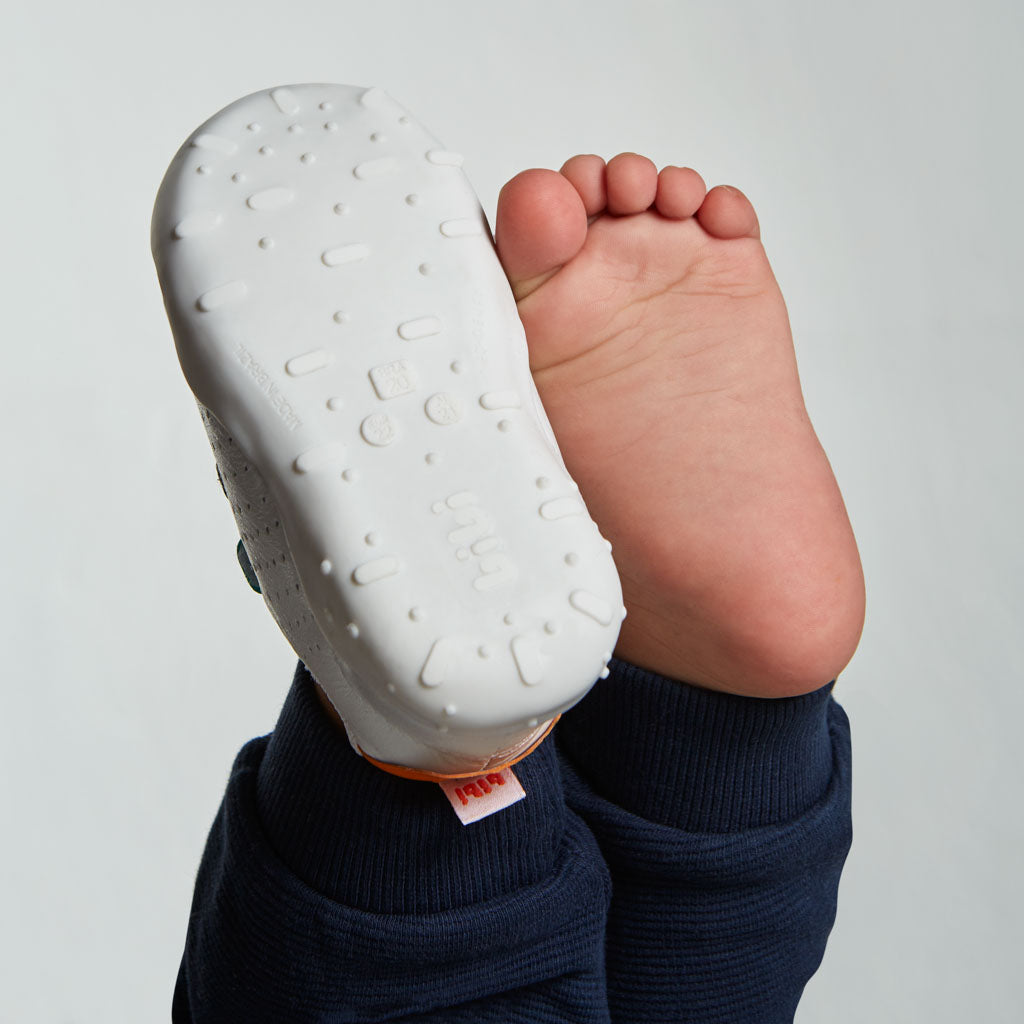
Natural like barefoot
The benefits of toddlers being barefoot are profound for their developmental stages. Being barefoot enhances sensory feedback, which is crucial for the development of motor skills, balance, and coordination. It allows toddlers to form a better understanding of their environment, promoting stronger foot muscles and more agile movements.
When shoes are necessary, footwear designed to emulate the barefoot experience can offer similar benefits. These shoes are characterised by a minimal design, incorporating thin, flexible soles that provide protection while allowing the foot to move and flex naturally. The absence of arch support and a zero-drop heel-to-toe slope maintain the foot's natural alignment, encouraging a healthier walking pattern.
In production, the focus is on eliminating unnecessary structure, ensuring the shoe is as light and flexible as possible. Manufacturing techniques allow for the creation of a wider toe box, giving toes the freedom to spread and grip, similar to being barefoot. Through these design and production choices, shoes can offer the closest sensation to barefoot walking, supporting the natural development of a toddler's feet and their overall physical development.
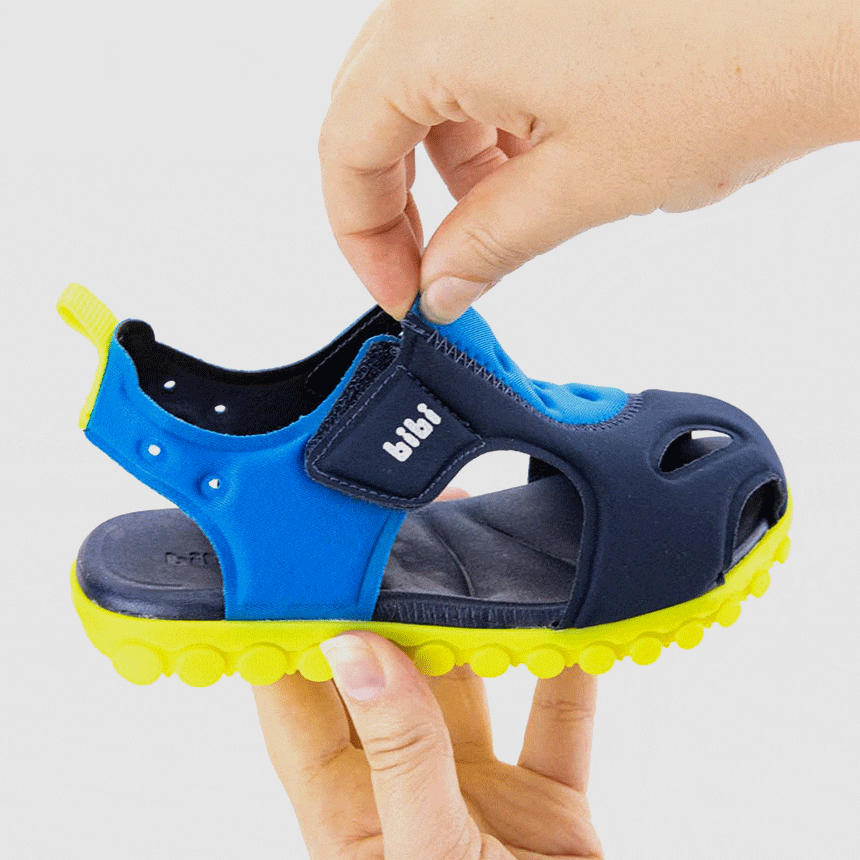
Style and functionality
Toddler shoes come in various styles, including sneakers, high-tops, boots, sandals and ballerinas; each with fasteners like Velcro straps, buckles or laces, and feature like anti-slip soles and toe guards.
Sneakers are often favored for everyday wear due to their lightweight design and flexibility, often featuring Velcro straps that make them easy to put on and take off, fostering independence in toddlers. However, sneakers may not provide enough protection in harsh weather conditions.
Boots offer more coverage and protection, making them suitable for cold or wet weather. They can be bulkier, potentially restricting movement for less experienced walkers.
Sandals are ideal for warm weather, providing ventilation and comfort while protecting the feet. They often feature adjustable straps for a secure fit, catering to the needs of fast-growing toddler feet. However, it's crucial to choose sandals with adequate foot support and protection, especially around the toe area, to prevent injuries during play.
Ballerina shoes, with their slip-on design, offer a convenient option for both casual and formal occasions. They're lightweight and flexible, and have flat soles allowing for natural foot movements.
Velcro straps are ideal for quick adjustments and ease of use, beneficial for busy parents and toddlers learning to dress themselves. Laces can offer a more secure fit and may be better at keeping shoes in place, but they require more time to fasten and typically need an adult’s help.
Anti-slip soles are vital for safety, especially as children are active and often engage in dynamic physical activities. The right anti-slip shoes will provide essential traction, reducing the risk of slips and falls, which are common in young children due to their developing motor skills and coordination. This contributes to a child’s confidence while walking or running, promoting physical activity and exploration, and supporting their overall development and independence.

Sizing and fit
Choosing the right size shoe for toddlers is a crucial aspect of supporting their foot health and overall comfort. Toddlers' feet grow at a rapid pace, which means parents need to be vigilant in ensuring shoes fit properly over time. The right shoe offers just enough room for growth—approximately 10 to 14mm space forward from the longest toe—while ensuring the foot is securely positioned without too much room to slide, which can lead to tripping or blisters.
Having a professional measure the child's feet or accurately measuring at home can make a significant difference in starting with the correct size. However, it's equally important to regularly check the fit, ideally every 2-3 months, as a growing child can quickly outgrow their shoes. It's also vital to understand that sizing will vary between brands, and potentially between styles of the same brand.
Hand-me-down shoes should be worn with caution, as pre-worn shoes may have molded to the original wearer's foot, potentially leading to a less than ideal fit for the next child.
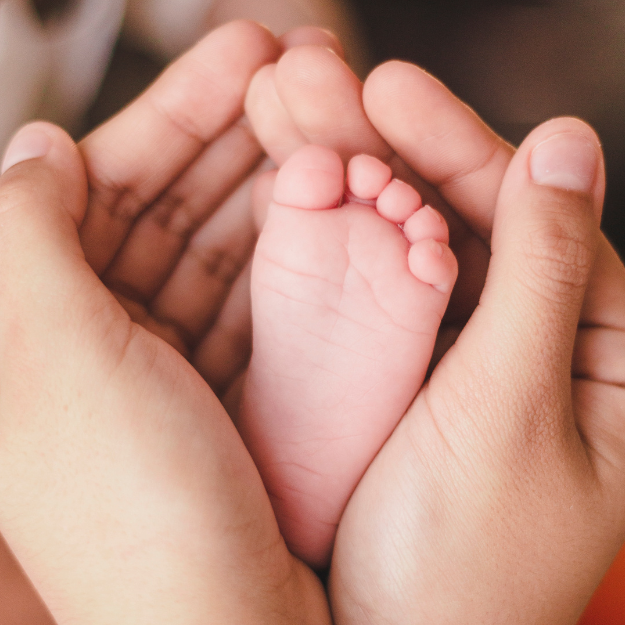
Foot care tips
For parents aiming to maintain their children's foot health, a combination of proper footwear, hygiene practices, and the right socks is crucial.
Choosing shoes with the qualities discussed in this article is the first step, and regularly checking to ensure that shoes fit correctly. Poorly designed shoes can lead to improper foot development, and effect gait and posture. It is equally important to let children spend time barefoot while they are learning to walk, and while indoors throughout their toddler years. This encourages natural foot strength and coordination by allowing direct contact with various surfaces.
Hygiene plays a pivotal role in foot health too. Regular washing of the feet, thorough drying, especially between the toes, and keeping toenails trimmed straight across to prevent ingrown toenails are essential practices.
When it comes to socks, choosing the right material can make a significant difference. Breathable materials like cotton or bamboo help in managing moisture, reducing the risk of fungal infections. Socks should fit snugly without constricting toes, allowing for comfortable movement and growth. Changing socks daily, or more frequently if they become wet, ensures feet stay dry and healthy.
By adhering to these foot care tips, parents can support their children's health, paving the way for a lifetime of comfortable and active mobility.



